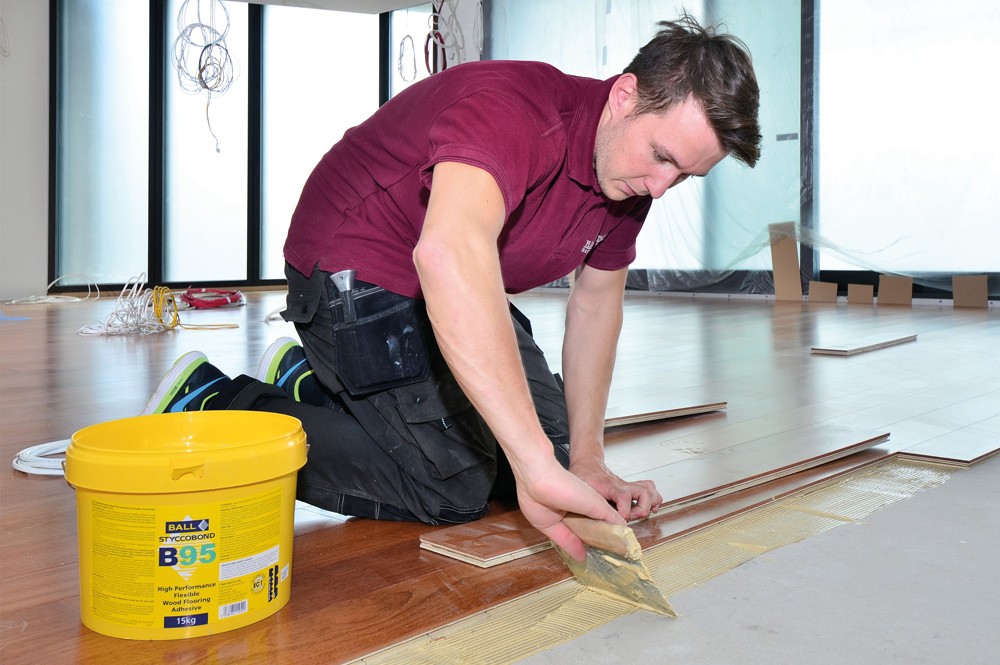When installing wood floorcoverings, contractors should follow the same principles of floorcovering installation while bearing in mind a few unique considerations, chief of which should be wood’s natural susceptibility to moisture. If unmanaged, excess subfloor moisture will cause wood to warp and attack adhesives, potentially resulting in the floorcoverings cupping or buckling, and, ultimately, complete floor failure.
Wood can also expand and contract significantly as a result of changes in atmospheric conditions, including temperature and humidity, exerting strain on adhesives and the surface to which floorcoverings are bonded. Engineered wood is less prone to this but it will still be affected.
Moisture management
Having ensured the subfloor is suitably sound, smooth, and free of any contaminant, including any old adhesive residues, it is essential to determine if it is dry enough to receive floorcoverings by undertaking a moisture test. F Ball and Co recommends this as a routine procedure as part of any flooring installation. To comply with British Standards, subfloor Relative Humidity (RH) levels should be measured using a calibrated digital hygrometer.
Normally, a waterproof surface membrane will be required to suppress excess subfloor moisture when subfloor RH levels are above 75%. However, the maximum permitted figure is 65% where wood floorcoverings will be installed because of the sensitivity of this type of floorcovering to moisture. Waterproof surface membranes create a barrier between floorcoverings and subfloor, protecting the floorcovering from the adverse effects of excess subfloor moisture.
Once a moisture management solution is in place, contractors can proceed to apply a levelling compound to ensure a perfectly smooth base for the receipt of floorcoverings, remembering to prime the subfloor beforehand. F Ball recommends using a heavy-duty levelling compound, such as its Stopgap 300 HD, prior to the installation of wood floorcoverings because they are better able to withstand the added strain exerted by the natural movement of the wood.
Choosing the right adhesive
Finally, contractors must select a specialist wood adhesive to install wood blocks or planks. Utilising the latest technology, flexible wood floor adhesives provide an elastic but strong bond, which will accommodate natural movement of wood flooring over its lifetime, ensuring a long lasting, visually attractive floor finish.
One such flexible wood floor adhesive, F Ball’s Styccobond B95, provides good initial tack whilst also allowing for repositioning of floorcoverings during the initial stage of drying, an advantage when installing wood blocks. F Ball also recommends Stycco Flex, its rapid-curing flexible cartridge adhesive, as an alternative for securing header rows. Its rapid strength build-up aids installations where subsequent rows are butted up to the head row using a mallet and a tapping block. Stycco Flex can also be used to install skirting boards and trims.
www.f-ball.com


